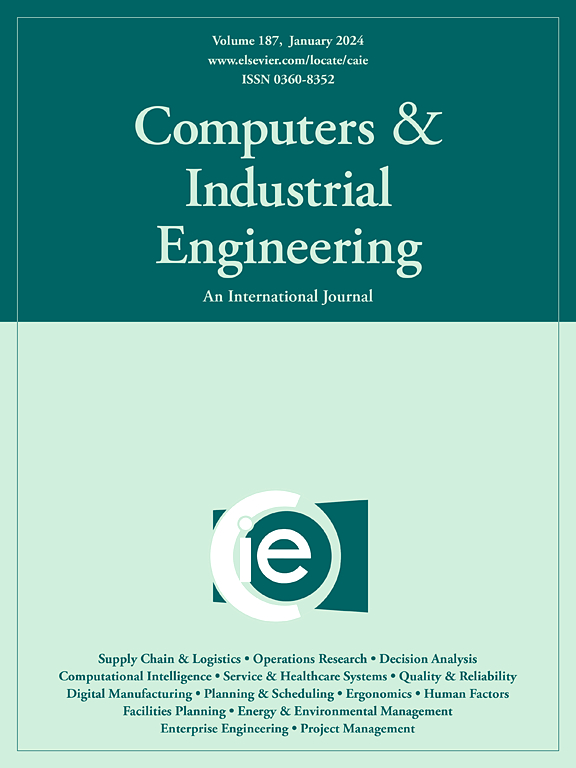雾云环境下农业食品工作流调度的多目标帝王蝶优化算法
IF 6.5
1区 工程技术
Q1 COMPUTER SCIENCE, INTERDISCIPLINARY APPLICATIONS
引用次数: 0
摘要
数据和连接对象的爆炸式增长鼓励了云、雾和边缘等分布式计算环境的发展,促进了实时数据处理。在农业食品领域,工业物联网(IIoT)和雾云计算的出现加强了这种演变。这些环境的主要挑战之一是在遵守SLA原则的同时有效地调度应用程序。本文利用改进的帝王蝶优化算法(MO-MBO)研究了农业食品工作流调度的多目标优化问题。我们的方法集成了帕累托支配、贪婪策略和自适应策略,以有效地处理四个相互冲突的目标:完工时间、成本、能量和延迟。在FogWorkflowSim上对农业食品健康监测工作流进行的仿真表明,MO-MBO节能(与遗传算法(GA)相比为68.63%,与粒子群优化算法(PSO)相比为67.78%,与非支配排序遗传算法- ii (NSGA-II)相比为85.48%),并改善了延迟(遗传算法为0.35%,PSO为0.14%,NSGA-II为0.10%)。然而,成本略有增加,GA增加0.85%,PSO增加0.29%,NSGA-II增加0.10%。与此同时,与GA相比,Makespan增加31.41%,与PSO相比增加29.27%,与NSGA-II相比增加10.67%。结果强调了MO-MBO能够有效地平衡多个相互冲突的目标,使其成为雾云系统中节能、低延迟调度的有希望的解决方案。本文章由计算机程序翻译,如有差异,请以英文原文为准。
Multi-Objective Monarch Butterfly Optimization algorithm for agri-food workflow scheduling in fog–cloud
The explosion of data and connected objects has encouraged the development of distributed computing environments such as cloud, fog and edge, facilitating real-time data processing. In the agri-food sector, this evolution is reinforced by the emergence of the Industrial Internet of Things (IIoT) and fog–cloud computing. One of the major challenges of these environments is the efficient scheduling of applications while respecting the SLA principle. This article deals with the multi-objective optimization of agri-food workflow scheduling using an improved version of the Monarch Butterfly Optimization (MO-MBO) algorithm. Our approach integrates Pareto dominance, a greedy strategy, and a self-adaptive strategy to effectively handle four conflicting objectives: makespan, cost, energy, and latency. Simulations carried out on FogWorkflowSim for the agri-food health monitoring workflow demonstrate that MO-MBO is energy-efficient (68.63% compared to the genetic algorithm (GA), 67.78% compared to the particle swarm optimization algorithm (PSO), and 85.48% compared to the Non Dominated Sorting Genetic Algorithm-II (NSGA-II)) and improves latency (0.35% for GA, 0.14% for PSO, and 0.10% for NSGA-II). However, cost increases marginally, by 0.85% for GA, 0.29% for PSO, and 0.10% for NSGA-II. Makespan, meanwhile, increases by 31.41% versus GA, 29.27% versus PSO, and 10.67% compared versus NSGA-II. The results highlight the ability of MO-MBO to effectively balance multiple, conflicting objectives, making it a promising solution for energy-efficient, low-latency scheduling in fog–cloud systems.
求助全文
通过发布文献求助,成功后即可免费获取论文全文。
去求助
来源期刊

Computers & Industrial Engineering
工程技术-工程:工业
CiteScore
12.70
自引率
12.70%
发文量
794
审稿时长
10.6 months
期刊介绍:
Computers & Industrial Engineering (CAIE) is dedicated to researchers, educators, and practitioners in industrial engineering and related fields. Pioneering the integration of computers in research, education, and practice, industrial engineering has evolved to make computers and electronic communication integral to its domain. CAIE publishes original contributions focusing on the development of novel computerized methodologies to address industrial engineering problems. It also highlights the applications of these methodologies to issues within the broader industrial engineering and associated communities. The journal actively encourages submissions that push the boundaries of fundamental theories and concepts in industrial engineering techniques.
 求助内容:
求助内容: 应助结果提醒方式:
应助结果提醒方式:


